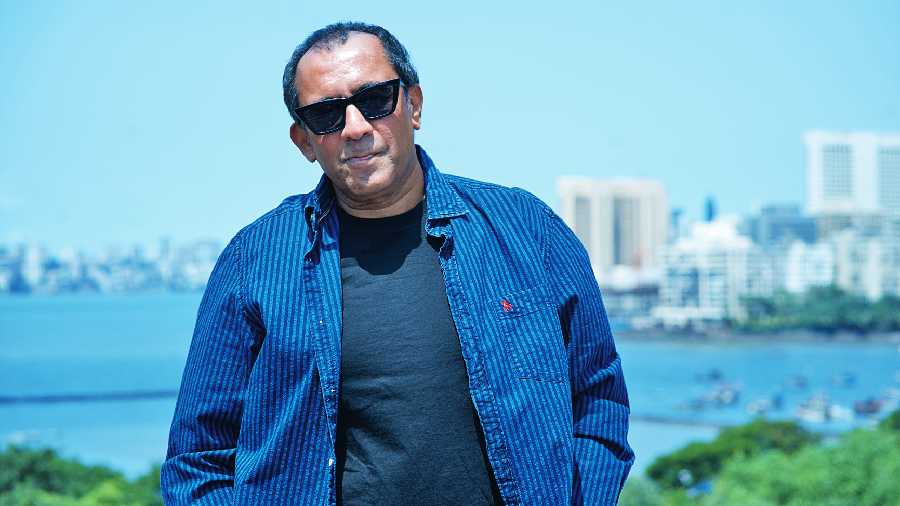Singer Sanjay Maroo whose single Tu hi tu became a chartbuster in the ’90s is back after two decades with a new song, Kal ka bharosa?. Sticking to the pop-rock genre, the multi-hyphenate artiste will be dropping the track on November 4 and says that the song is inspired by his lessons from life. We caught up with the singer who hints that Kal ka bharosa? is a start to his new innings in the music industry. Excerpts.
Following the current trends, you are going to drop a single and not an album, right?
Given the changes in the way music is sought out and heard by today’s audience, I feel that the concept of an album is no longer as relevant. With the current overload of content, the attention span of listeners has reduced greatly and so has the retention. So, I’ve decided to go with a series of singles and have created a repertoire which I will continue to unravel over a few months.
What is it that egged you to make a comeback?
I have always been leading a dual life — with my business commitments and my music as the two intrinsic and integral elements essential for my existence. To me, songwriting is a process that cannot be forced. It must come from within. So, I write when I feel inspired or when something moves me. Also, since I do almost everything from the lyrics, compositions, arrangements, vocals, harmonies and so on; everything, including laying down the recordings of the primary tracks, takes longer. So, Kal ka bharosa? reflects my thoughts and feelings at this stage of my life and that’s what I’m sharing through my music.
The indie music scene is booming now. How do you think this wave is different from the one in the ’90s?
It’s really great to see the growing love and support for indie music. I’m very happy that the audiences have recognised that there’s more to music than playback in films and miming actors. The ’90s were a very different period when we were rebelling against the reality that if you didn’t do a film song, you didn’t exist. So, indie came as a breath of fresh air, which people enjoyed and supported. It was also the advent of satellite TV in India so we suddenly had a platform to showcase our music. That period kind of laid the foundations for what’s going on today. I’m proud to have been a part of the early movement and glad to continue being a part of it.

Indian music has got a big transformation. How are you planning to reinvent?
The transformation is basically about having the liberty of saying what you feel like without having to work within the confines of a film story or singing for a film star. In indie music, it is we who are the singers and actors and everything that goes into it. So, there is a freedom of creative expression without the burden of massive budgets, which must appeal to the masses to get returns. Here we are happy to manage with our limited resources and are still able to create music that comes from unique minds and not from the directions of a producer who’s sunk in millions and has to play it safe to recover.
Among the current indie artists do you have a favourite?
There are some really cool acts which I feel have created their own space. Artistes such as Ritwiz, Prateek Kuhad, Divine, When Chai Met Toast are all unique acts. But it’s great to see that the current generation also loves experienced artistes like Lucky Ali, Adnan Sami, Shaan, Sona Mohapatra, and some of the veteran rock bands, to mention a few. Besides the Hindi acts, Punjabi and Tamil songs are also appreciated. So, in India we really have a wide range of indie music that is fresh and fascinating. The potential is huge.
Among the playback singers do you have a favourite?
Well, I’m a bit old school in this regard and still maintain that Kishore Kumar, Mohd Rafi, Lata ji, Asha ji were the greatest. They sang very melodically and technically complex songs with no tech crutches to correct errors and without audio-wave manipulations of any kind. They cannot be compared to any of the big playback singers of today. Having said that, there are some great voices who are very popular. But the downside is that when there’s a hit song or vibe, then everyone tries to sound the same too. So I don’t really want to point out any specifics. But they’re all doing well. And who’s to argue with success.
Your song Tu hi tu was a big hit in the ’90s. What are you expecting from your upcoming single?
What’s gone by was great and I’m very grateful for it. I now look forward to seeing how my new offerings are accepted and hope to learn from audiences and their reactions. For me it’s never been about chasing a hit, but has been clearly about saying what I believe in. That’s why, when Tu hi tu was launched it was very different from whatever was going around then and with Kal ka bharosa?, I hope I’ll be able to make a powerful impact again. It’s not your usual 4/4 beat, but it’s a track composed in the time signature of 7 so there’s a challenge, and I’m waiting to see how the audience reacts to it. I’m sure that they’ll go with the flow, and appreciate the slight deviation from the norm.
